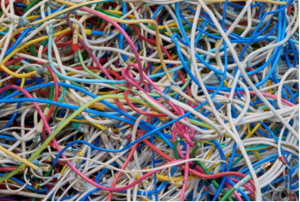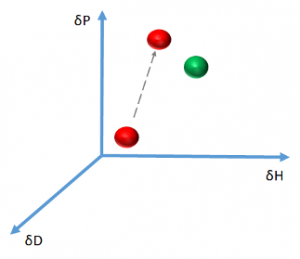Surface Treatment: When should you opt for the Corona Process and when for the FLAIR™ Process? A question of technology management.
In a four-part series of articles, we want to give you some help with this.
Part 1: The key aspects for choosing the right plasma technology for surface treatment
This first article looks at the relationship between surface energy and adhesion and good surface treatment as a basis for choosing the right plasma technology.
Which are the key aspects for choosing the right plasma technology?
First of all, a few thoughts on adhesion and surface energy as well as good surface treatment as a basis for evaluating the selection of the right plasma technology.
This is about improving adhesion, not just about increasing the surface tension on polymer films. So, what should and can be done with a particular film to improve the adhesion of a particular coating?
Adhesion is an interplay of intermolecular forces, such as covalent bonds, dipole forces, hydrogen bonds, van der Waals forces, ionic bonds or metallic bonds.
The surface tension of polymer films, on the other hand, is the ratio of the electronegativity of the atomic building blocks of the film.
Polymers are hydrocarbons and have a low surface tension due to the very similar electronegativity of their chemical elements, carbon 2.5 and hydrogen 2.2 (according to the Pauling scale). This is around 30 mN/m or dynes/cm for polypropylene and 30-32 mN/m for polyethylene.
However, a higher surface tension is required for further processing, for example for coating, metallization or printing. As a good rule of thumb, a surface tension of over 38 mN is considered suitable for further processing. Such an increase in surface tension is also known as surface activation.
As you can see, mN/m – millinewtons per meter – is not very strong.
For good adhesion between two materials, you need a much stronger bond, in the range of over one Newton per centimeter (> 1 N/cm), i.e. over 1000 times stronger. Or in short and immediately obvious, surface tension does not increase adhesion.
So, does it only work with covalent bonds? Not really, because the same applies to covalent bonds with 1-10 mN/cm. These are around 100 times too weak for good adhesion.
But why is everyone talking about surface tension if you want to achieve adhesion?
Good adhesion, on the other hand, requires a good interface region in which the forces can be transferred or dissipated (dissipation) well – i.e. not a purely 2-dimensional interface – and entanglement of the polymer chains of the film and the polymer chains of the respective coating.
The polymers need time and temperature to entangle. It also only works for the amorphous sections within the polymers. In addition, the molecular weight or length of the polymer must be above a critical value – not too short, not too light.
You can imagine this as a „cable spaghetti“ of your old cell phone charging cables in your drawer: There should already be a few more cables. The cables should also not be too short, so that the ends and loops of the cables get tangled up with each other, the stronger the worse. That’s why you keep trying (in vain) to roll up the cables so that they are small, compact and have no loose ends…

Fig. 1 cable spaghetti as an analogy for good „entanglement“ and thus a good prerequisite for good adhesion.
Similar to the cables in your drawer, polymers must be compatible with each other. To stay with the analogy, a ship’s rope doesn’t easily get tangled with a cell phone charging cable, but ship’s ropes get tangled with each other or cell phone charging cables with each other very well.
The Hansen solubility parameter (HSP) is a good measure of such compatibility.
The Hansen solubility parameters assign a value to each polymer in terms of its dispersion, polarity and hydrogen bonding.

Fig. 2 Dimensions of the Hansen solubility parameters: Dispersion δD, polarity δP and hydrogen bonding δH
The compatibility of the polymers now means that the polymers which are to adhere to each other or become entangled with each other should be as close as possible to each other in this parameter space.
But what does all this have to do with each other and with surface tension?
Quite simple, the surface tension is a 1-dimensional „simplification“ of the Hansen solubility parameters!
For a small HSP distance, at least the surface tensions must be close to each other.
It would be even better if both the disperse and polar parts of the surface tension were close to each other. And it would be even better if all HSPs were close to each other.
This is the reason why we always look at the surface tension in the real world, even though we are talking about adhesion
What makes a good surface treatment to enhance adhesion?
A good surface treatment to enhance adhesion is about finding the right balance between the different effects of the surface treatment.
The most important aspects are firstly the molecular weight or length of the polymer molecule, secondly the HSP (or, to simplify, at least the surface tension) and thirdly the crystallinity, in other words the amorphous sections of the polymer.
In the next article we will look at how corona treatment approaches this type of balance.
The third article will look at how other plasma processes attempt to achieve this equilibrium, which leads to the FLAIR process.
The fourth article then compares these processes with each other and provides an overview.
